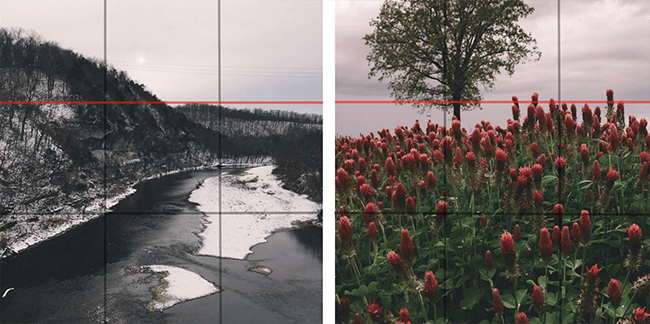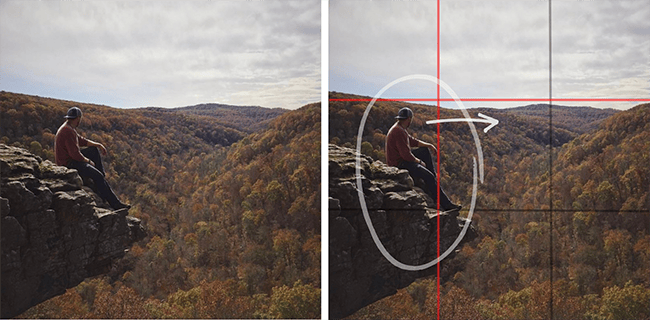

Uh oh...
It appears that you're using a severely outdated version of Safari on Windows. Many features won't work correctly, and functionality can't be guaranteed. Please try viewing this website in Edge, Mozilla, Chrome, or another modern browser. Sorry for any inconvenience this may have caused!
Read More about this safari issue.
Processed with VSCO with al3 preset

Photography is more than just capturing a scene; it’s about telling a story through visuals. One of the most powerful tools in a photographer’s arsenal is composition. Composition refers to the arrangement and placement of elements within a photograph, guiding the viewer’s eye and creating a harmonious and impactful image. We’ll explore the fundamental principles of photography composition and how you can use them to elevate your photography to new heights.
Rule of Thirds
The rule of thirds is a classic composition guideline that divides the frame into a 3×3 grid. By placing key elements along these grid lines or at their intersections, you create a balanced and visually appealing composition. Experiment with placing your subject off-center to add dynamism and interest to your images.
Here’s a closer look at how the rule of thirds can be applied effectively:
Placing Key Elements
When composing your shot, consider positioning important elements of your scene along the lines or at the points of intersection within the grid. These areas naturally draw the viewer’s attention and create a sense of balance and harmony in the composition. For example, you might position a person’s eyes at one of the upper points of intersection or align a horizon along one of the horizontal grid lines.
Balancing Elements
The rule of thirds can help you achieve balance within your composition. By placing different elements along the grid lines or intersections, you distribute visual weight throughout the frame. This can help create a more pleasing and harmonious composition compared to having all the elements concentrated in one area.
Multiple Points of Interest
When photographing scenes with multiple points of interest, the rule of thirds can guide you in placing those points strategically. You can use the grid lines and intersections to align and distribute the various elements, ensuring that each one receives appropriate attention and contributes to the overall visual narrative.
Adjusting Horizon Lines
For landscape photography, the rule of thirds is often applied to position the horizon line along one of the horizontal grid lines. This decision affects the emphasis given to the sky or the foreground, helping to create a sense of depth and balance within the image. When there is a distinct horizon, look at what is above and below the horizon to determine how to compose the photo. In the scene below, the sky is more interesting than the road, so the horizon was positioned on the bottom third of the image.
To break down this next image a bit more, you can see that the subject is placed on the left third of the image because he is looking into the photo, which helps lead the viewer into the scene.
Remember, the rule of thirds is not a strict rule, but rather a guideline that can be followed or creatively broken depending on the desired effect. It’s essential to experiment and develop your artistic vision by exploring different compositions and finding what works best for your specific subject matter and storytelling style.
By utilizing the rule of thirds effectively, you can create visually compelling and well-balanced compositions that captivate your viewers and draw them into your photographs.
Fun fact: all of the photos in this post were taken with an iPhone! Great photos can be made with whatever you have in hand.
Photography Series with Ashel!
We do the work.
You check your email.
Sign up for our weekly e-news.
Get stories sent straight to your inbox!



















Like this story? Read more from Ashel Parsons
Silhouette photography is a captivating technique that allows...
Many men and women dream of that day that they get to say “I Do” to...
Angles in photography refer to the position from which a photographer...
Join the Conversation
Leave a Comment